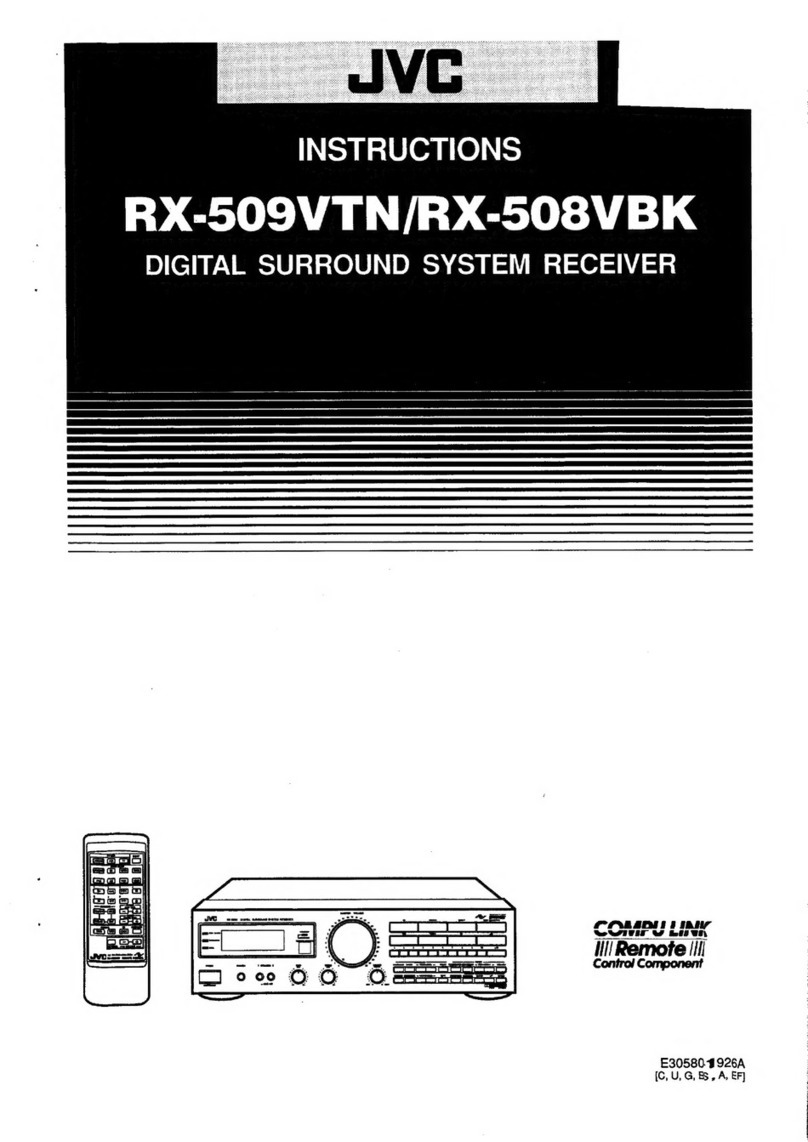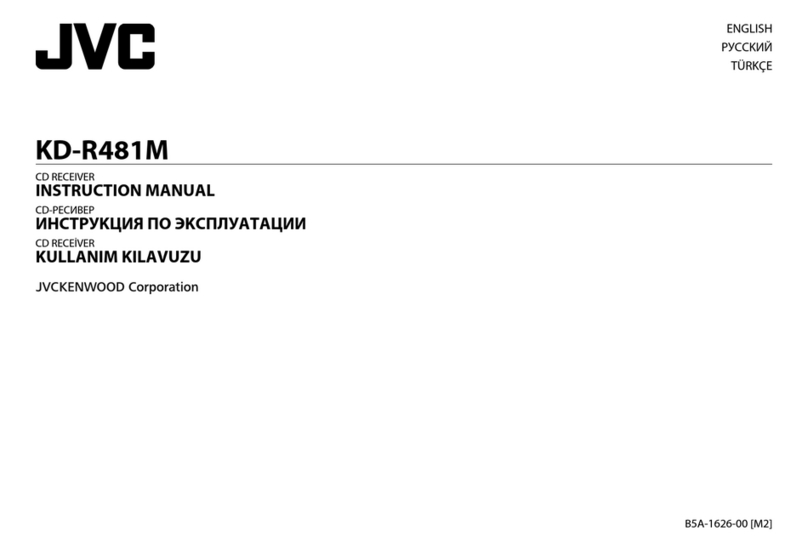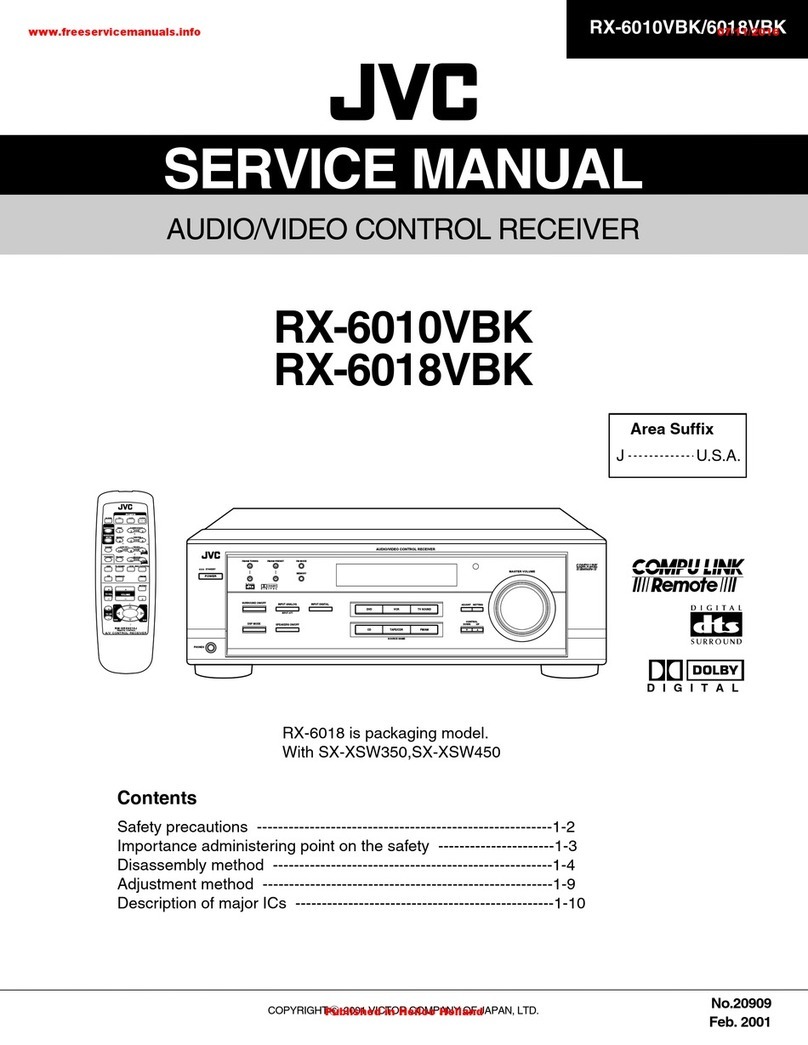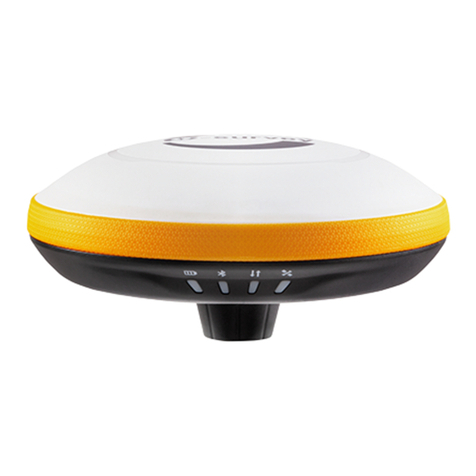
(No.MA341)1-3
KW-AVX900EE
Design and specifications are subject to change without notice.
AMPLIFIER
Maximum Power Output Front/Rear 50 W per channel
Continuous Power Output (RMS) Front/Rear 20 W per channel into 4 Ω40 Hz to 20 000 Hz at no more than
0.8% total harmonic distortion
Load Impedance 4 Ω(4 Ωto 8 Ωallowance)
Equalizer Control Range Frequencies 60 Hz 150 Hz 400 Hz 1 kHz 2.5 kHz 6.3 kHz 15 kHz
Level ±10 dB
Signal-to-Noise Ratio 70 dB
Audio Output Level LINE OUT (FRONT/REAR)/CENTER
OUT/ SUBWOOFER
Line-Out Level/Impedance 5.0 V/20 kΩload (full scale)
Output Impedance 1 kΩ
Color System PAL
Video Output (composite) 1 Vp-p/75 Ω
Other Terminals Input LINE IN VIDEO IN CAMERA IN USB input terminal Aerial input
Output 2nd AUDIO OUT, VIDEO OUT
Others CD changer, OE REMOTE
FM/AM TUNER
Frequency Range FM 87.5 MHz to 108.0 MHz
AM (MW) 522 kHz to 1 620 kHz
(LW) 144 kHz to 279 kHz
FM Tuner Usable Sensitivity 11.3 dBf (1.0 µV/75 Ω)
50 dB Quieting Sensitivity 16.3 dBf (1.8 µV/75 Ω)
Alternate Channel Selectivity (400 kHz) 65 dB
Frequency Response 40 Hz to 15 000 Hz
Stereo Separation 35 dB
MW Tuner Sensitivity/Selectivity 20 µV/35 dB
LW Tuner Sensitivity 50 µV
DVD/CD
Signal Detection System Non-contact optical pickup (semiconductor laser)
Frequency Response DVD, fs=48 kHz 16 Hz to 22 000 Hz
DVD, fs=192 kHz 16 Hz to 88 000 Hz
VCD/CD 16 Hz to 20 000 Hz
Dynamic Range 93 dB
Signal-to-Noise Ratio 95 dB
Wow and Flutter Less than measurable limit
SD
Compatible File System FAT 32/16/12
Capacity 8 Mbytes to 2 Gbytes
Data Transfer Rate Maximum 10 Mbps
USB
USB Standards USB 1.1
Data Transfer Rate Full Speed: Maximum 12 Mbytes
Low Speed: Maximum 1.5 Mbytes
Compatible Device Mass storage class
Compatible File System FAT 32/16/12
Max. Current Less than 500 mA/5V
TV
Color System SECAM
Channel Coverage VHF: Ch 1 - 12
UHF: Ch 21 - 69
MONITOR
Screen Size 7 inch wide liquid crystal display
Number of Pixel 336 960 pixels: 480 x 3 (horizontal) ×234 (vertical)
Drive Method TFT (Thin Film Transistor) active matrix format
Color System NTSC/PAL/SECAM
Aspect Ratio 16:9 (wide)
GENERAL
Power Requirement Operating Voltage DC 14.4 V (11 V to 16 V allowance)
Grounding System Negative ground
Allowable Storage Temperature -10°C to +60°C
Allowable Operating Temperature 0°C to +40°C
Dimensions (W ×H ×D): With trim plate and sleeve at-
tached
Installation Size (approx.) 182 mm ×111 mm ×160 mm
Panel Size (approx.) 188 mm ×117 mm ×10 mm
Mass (approx.) 3 kg (including trims and sleeve)
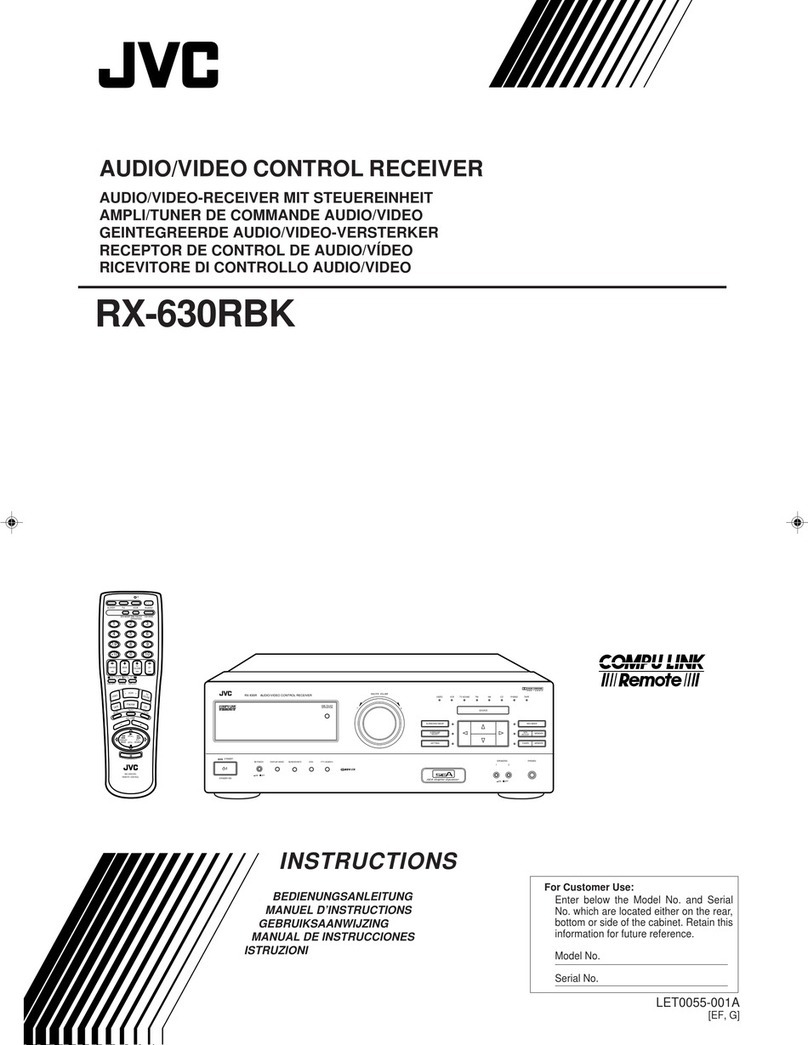

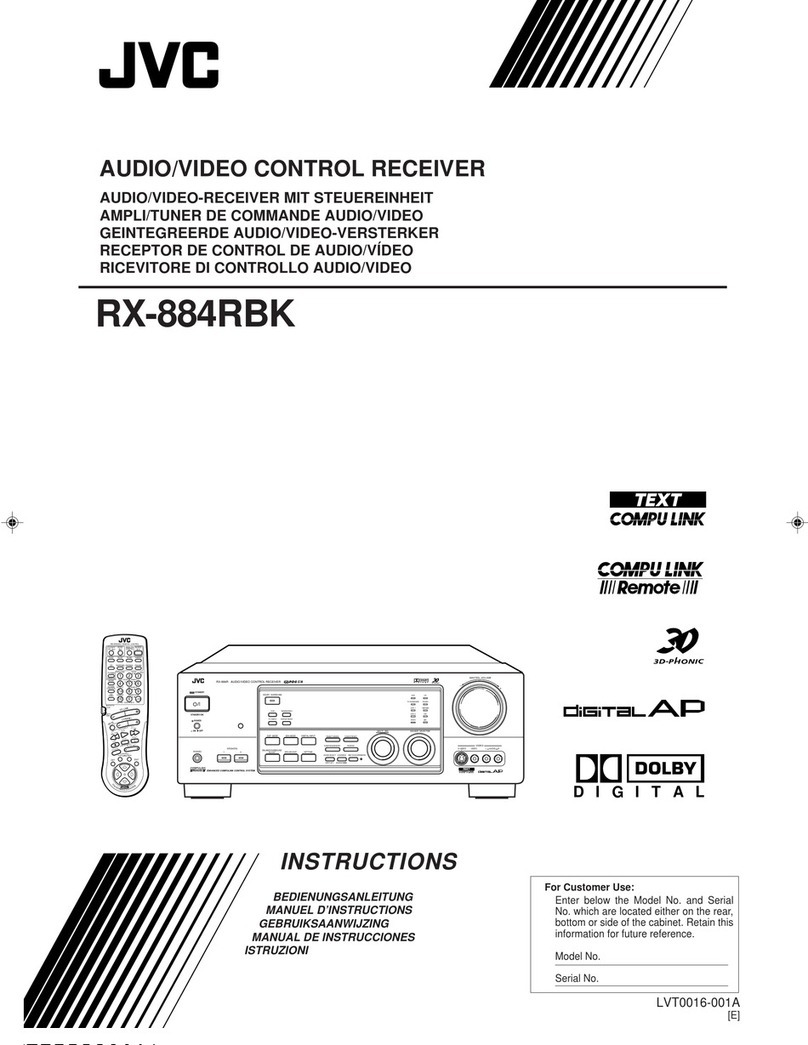
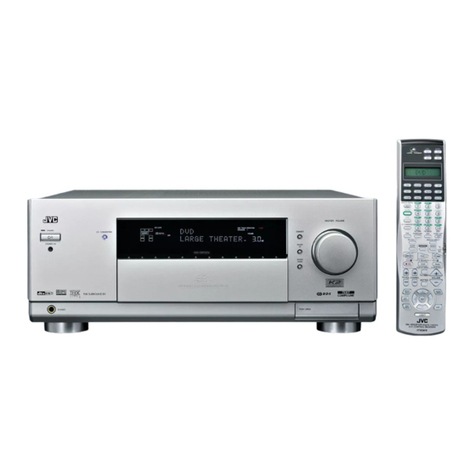
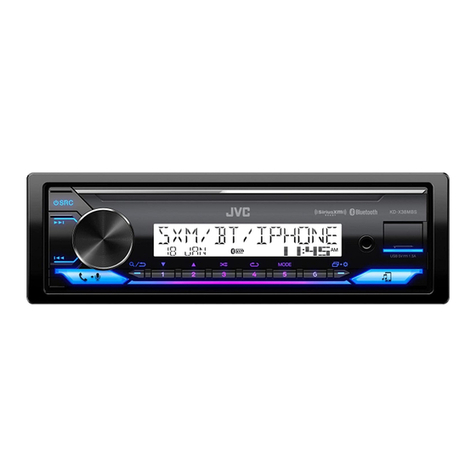
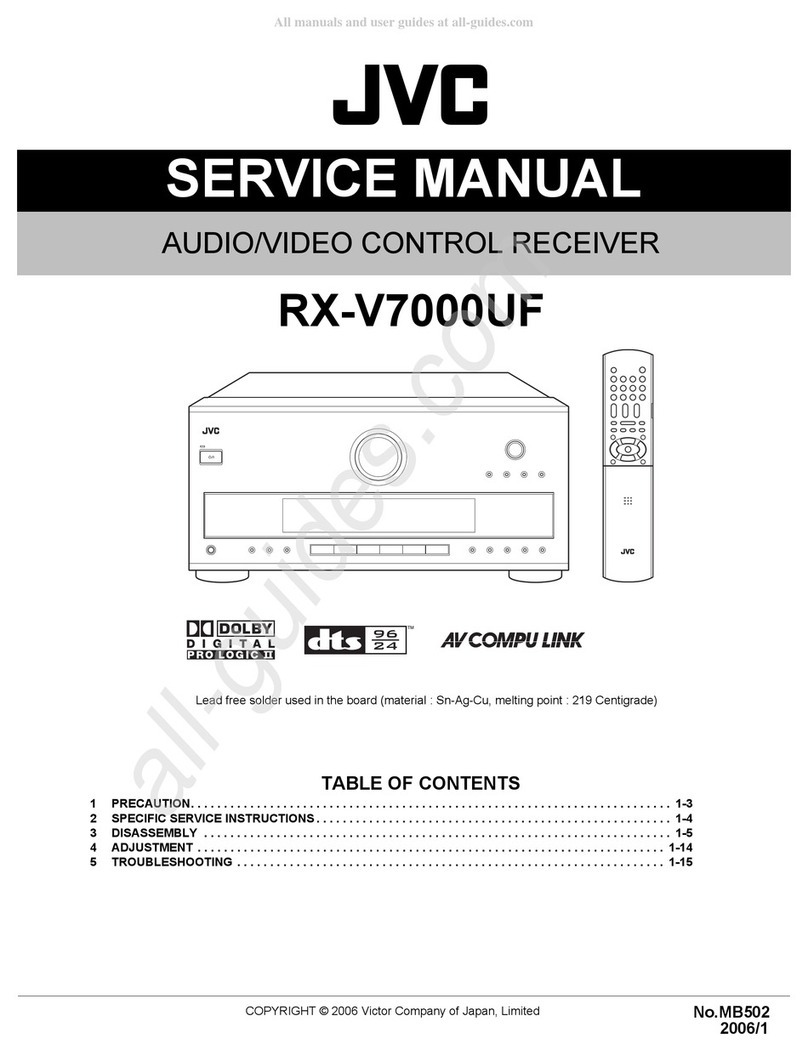
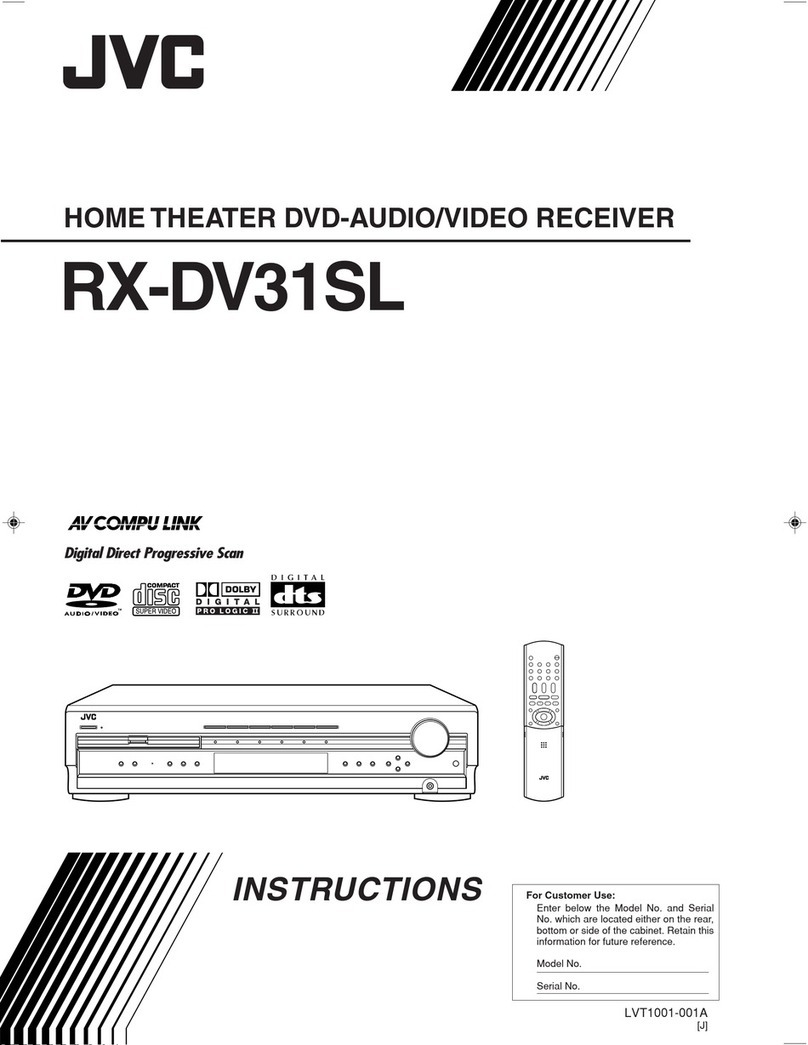
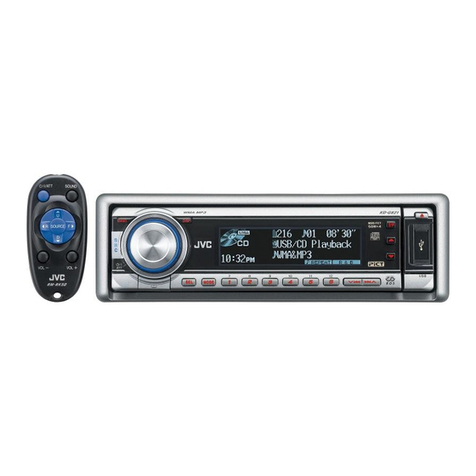
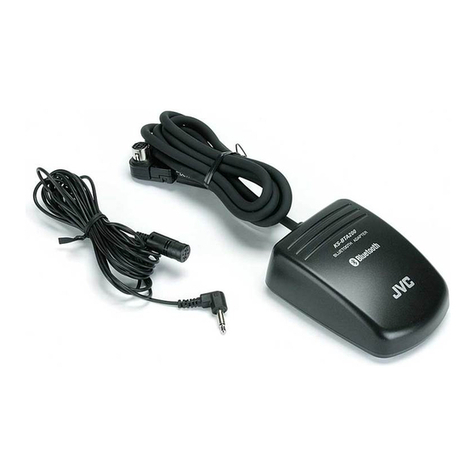

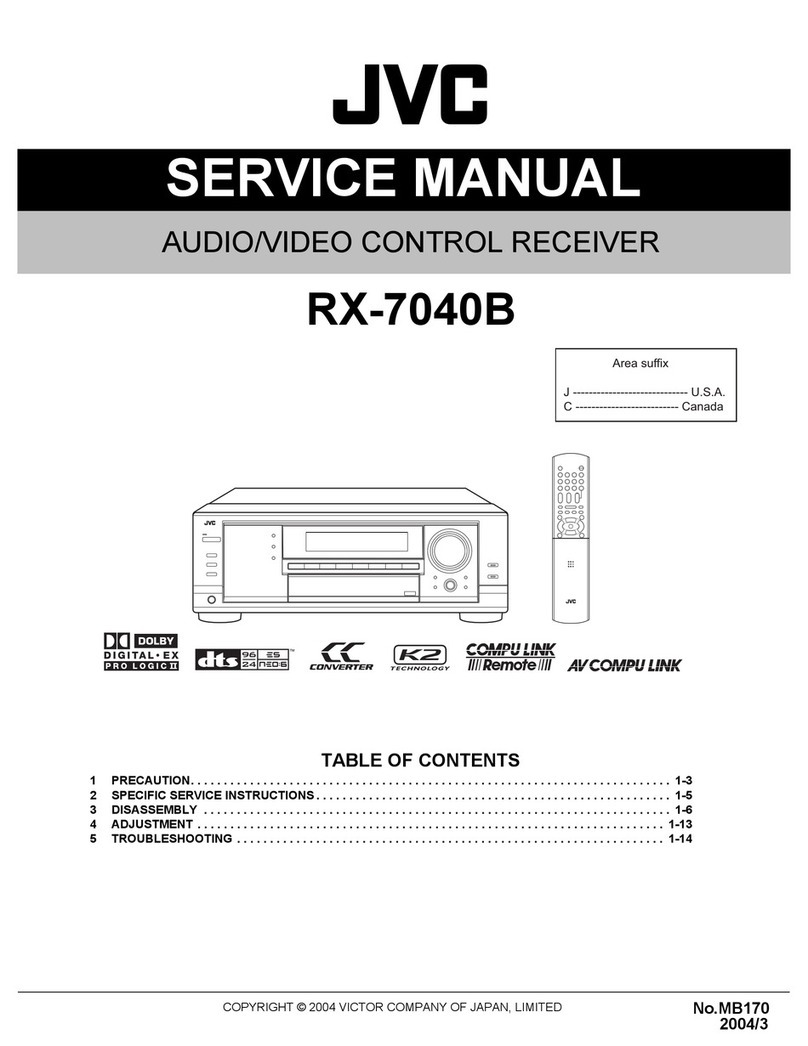

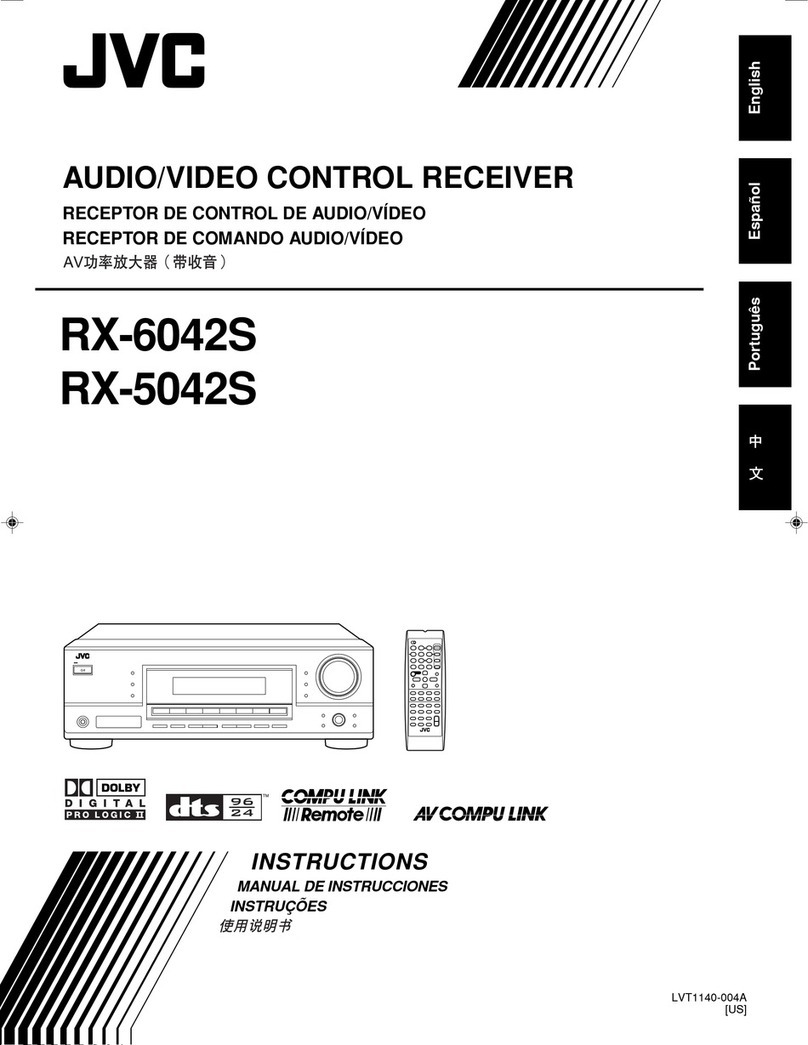

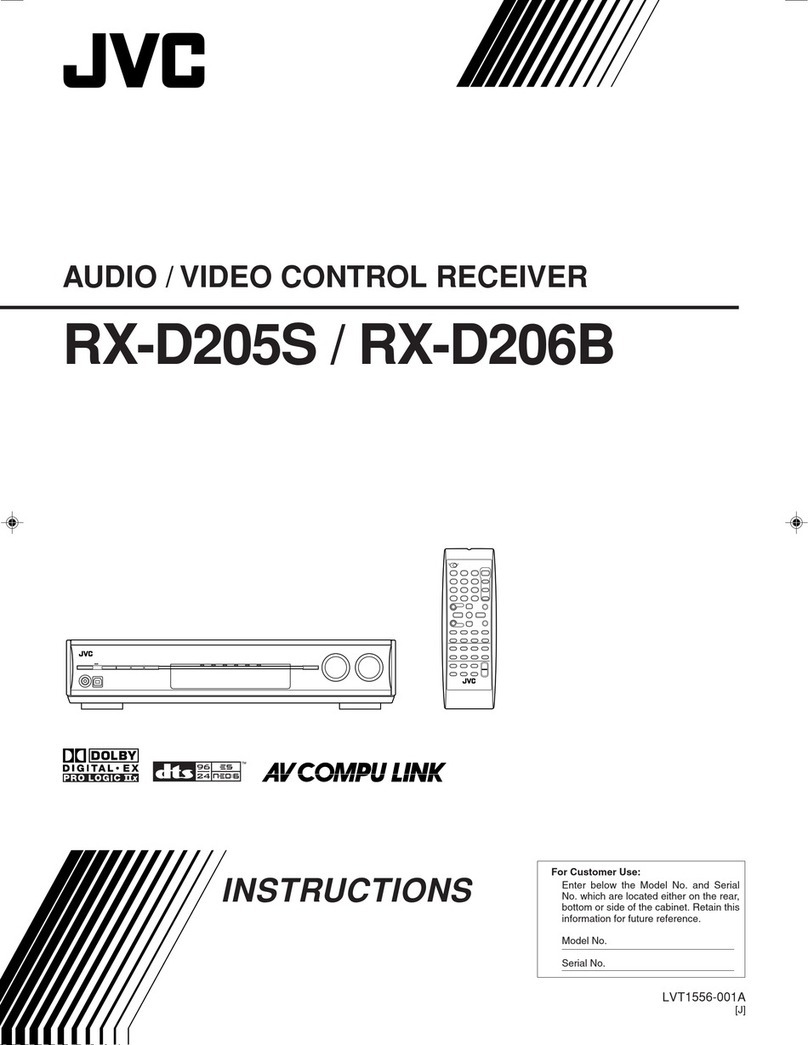
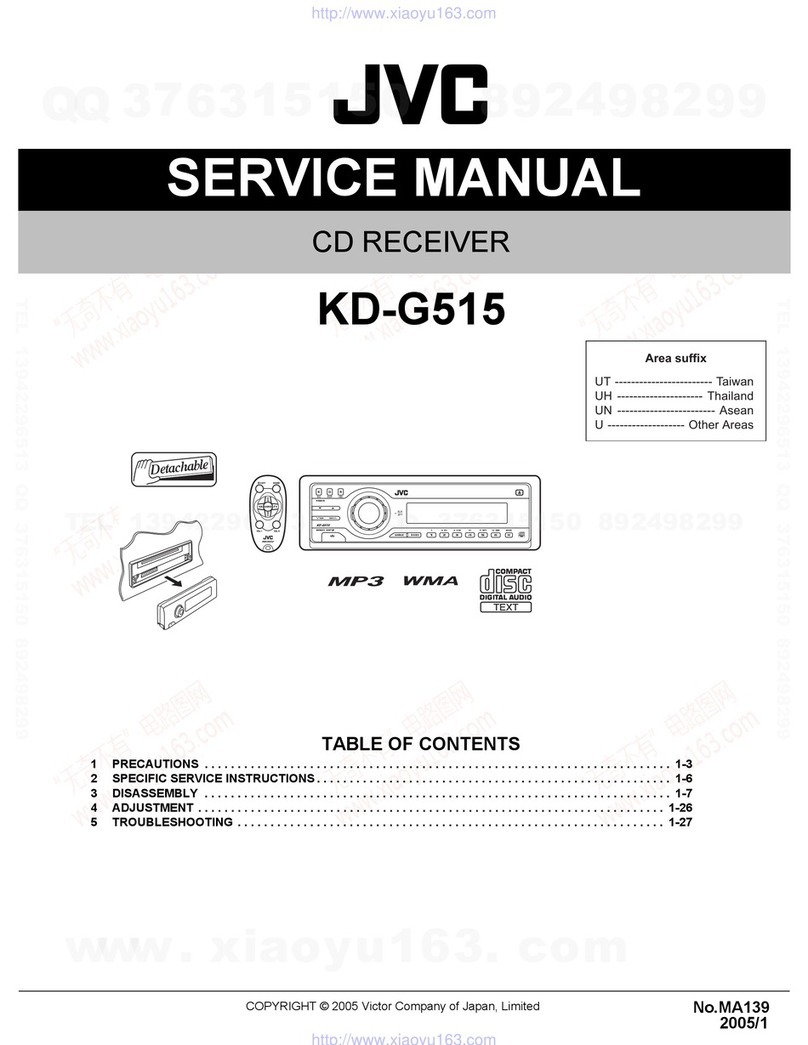
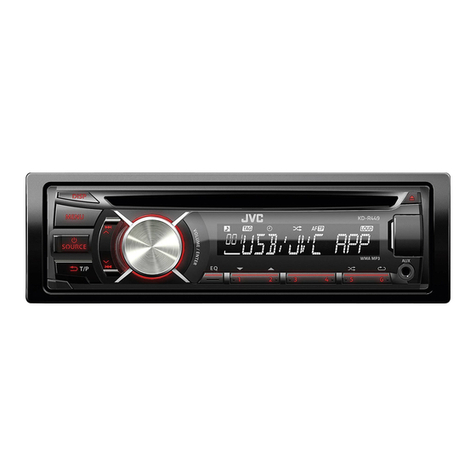
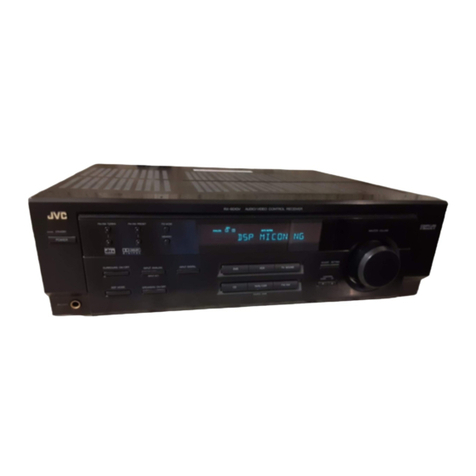
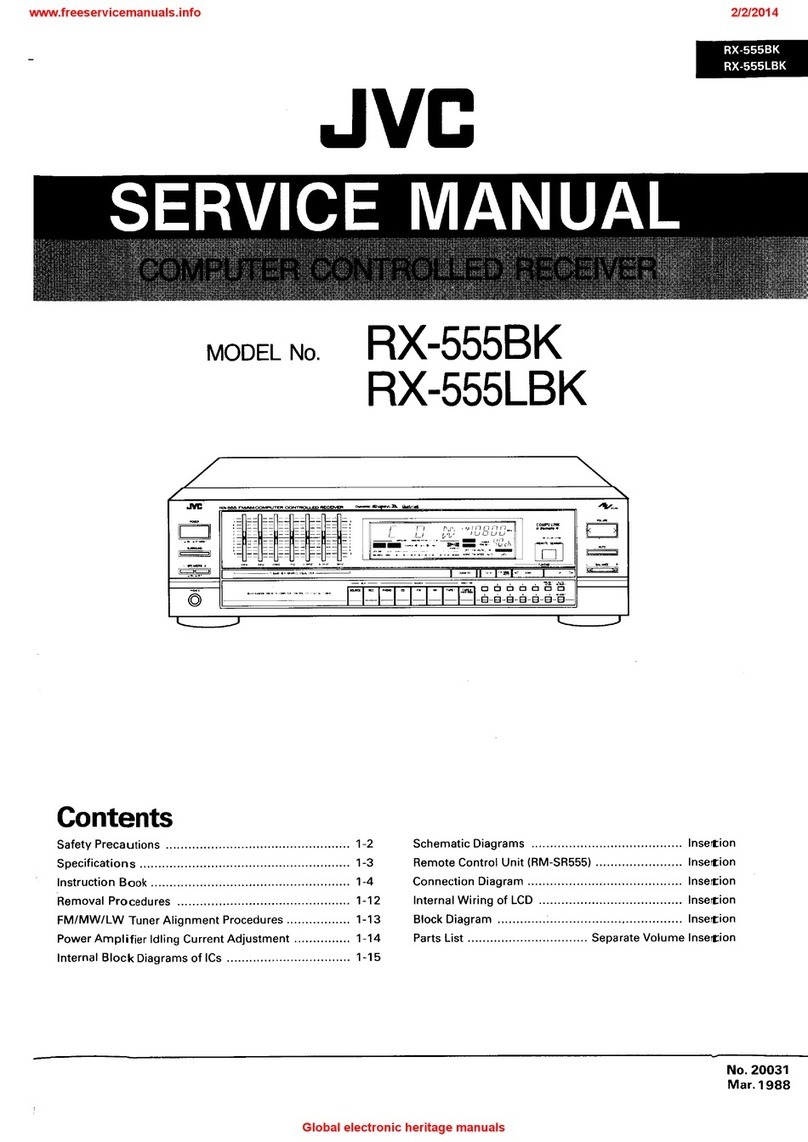
![JVC LVT1007-010A[A] User manual JVC LVT1007-010A[A] User manual](/data/manuals/2i/j/2ijgx/sources/jvc-lvt1007-010a-a--manual.jpg)

